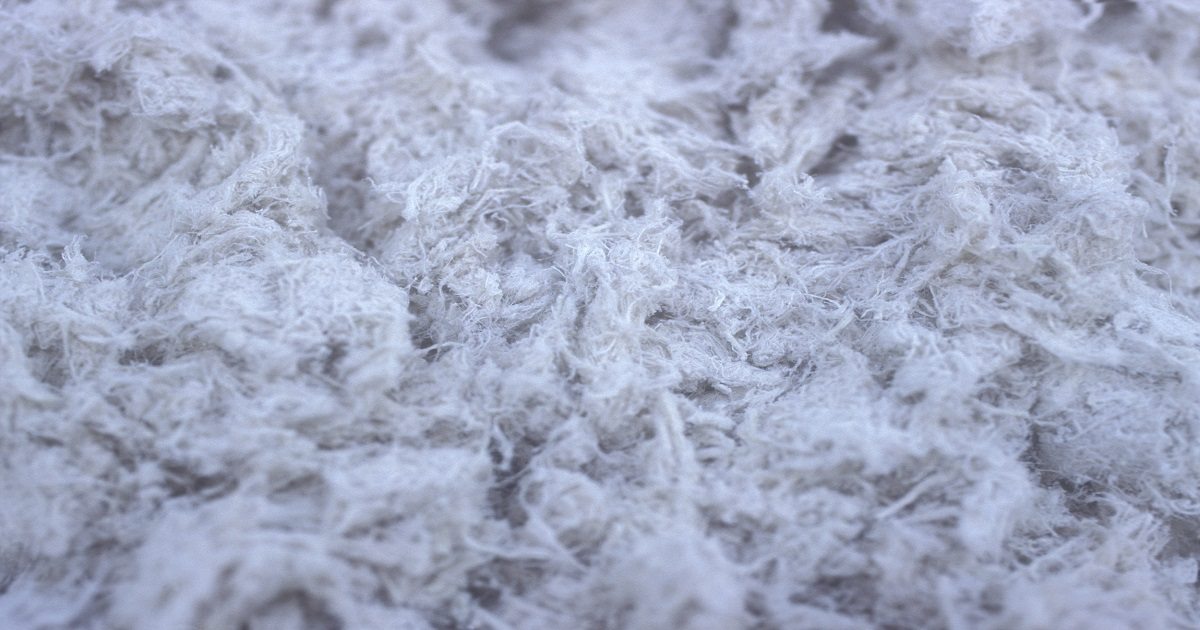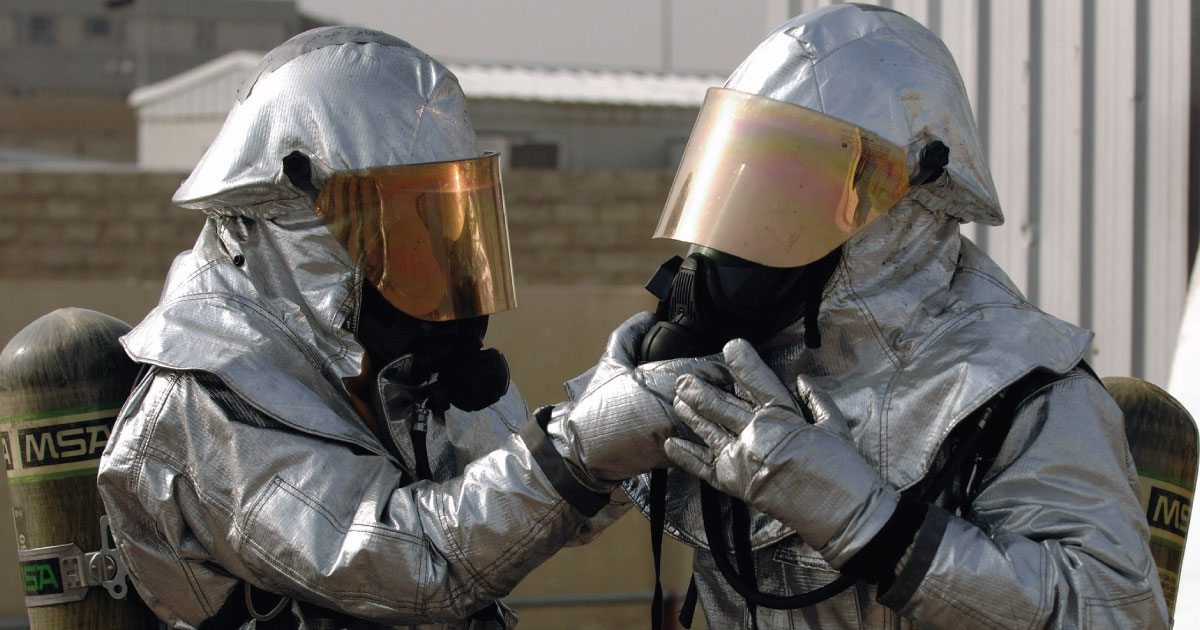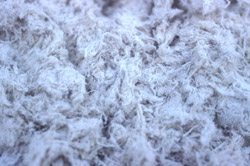Category: Asbestos Exposure

Increased Rate of Mesothelioma Detected Near Former PA Asbestos Factory
Researchers at the University of Pennsylvania have received a grant from the National Institutes of Health to document how people were affected by asbestos exposure who lived near an asbestos factory in Ambler, Pennsylvania. Exposure to asbestos dust is linked to serious respiratory diseases including lung cancer and mesothelioma, a cancer of the lining of the lungs.
The Pennsylvania Department of Health has identified an increase in the rate of mesothelioma around Ambler, where an asbestos factory operated for decades, according to a Penn Medicine news release this month. Ambler is just north of Philadelphia.
Dr. Fran Barg, an associate professor at University of Pennsylvania School of Medicine, told the CBS News affiliate in Philadelphia that Ambler has been profoundly affected by mesothelioma. The Ambler Boiler House, near the town’s revived Butler Avenue district, operated for nearly a century as an asbestos-manufacturing plan, but was shuttered in the mid 1970s.
Today, residents the West and South Ambler communities remain at risk of environmental exposure to asbestos and are potentially at increased risk of developing mesothelioma, the Penn Medicine researchers say. Although the factory has long been closed, symptoms of asbestos disease take decades to appear. Current and former Ambler residents who had occupational or environmental exposure to asbestos in the 1960s or 1970s or more recently could develop mesothelioma as a result of that past exposure.
Asbestos fibers when inhaled may lodge deep in the chest cavity, causing inflammation that eventually leads to disease. Mesothelioma is incurable, but there are treatments for mesothelioma to help manage the disease if it is diagnosed before it has reached an advanced stage.
“We know there is an existing health risk, but that’s just one piece of the problem,” Barg said in a Penn press release. “These communities suffered great social and economic consequences when the asbestos factory closed, and today, they are still trying to recover from that loss.”
The five-year study is to document the asbestos impact on the community and help local leaders make decisions about the future of the former asbestos factory site in the community. Barg and fellow researcher Edward Emmett, a professor of Occupational and Environmental Medicine, will develop a storehouse of information online and at the Chemical Heritage Foundation about the asbestos-related health risks in the community.
According to the U.S. Environmental Protection Agency, environmental regulators have overseen the cleanup of more than a million cubic yards of asbestos waste that was dumped on a 25-acre site nearby.
Ambler residents can contact Dr. Fran Barg directly for information about the study by emailing her at [email protected].

Demolition of Houses Damaged By Hurricane Sandy Poses Asbestos Exposure Risk
Approximately 200 houses in Staten Island, Queens and Brookyn battered by Hurricane Sandy will be demolished in coming months, The New York Times reported Sunday. The houses slated for demolition are all older structures and have building materials containing asbestos.
Thousands of people have stepped forward to take part in the cleanup since Hurricane Sandy struck New York and New Jersey in late October. Dr. Raja Flores, chief of thoracic surgery at Mount Sinai Hospital, said the cleanup was in some ways comparable to the cleanup after the Sept. 11 attacks. “You have all these innocent people trying to help and they are subjecting themselves to asbestos, a known carcinogen,” Dr. Flores told The Atlantic about asbestos exposure after the hurricane.
Asbestos exposure causes serious respiratory diseases including asbestosis, a chronic scarring of the lungs, lung cancer, and mesothelioma, a cancer of the lining of the lungs. Symptoms of mesothelioma typically take decades to appear after exposure, but the cancer is aggressive once symptoms appear.
Asbestos was used in floor and roofing felts, drywall, floor tiles, insulation, spray or ceiling coatings until the 1980s when its production was curtailed. But when older houses are renovated or demolished, the asbestos fibers may be released into the air and inhaled if workers are not wearing proper breathing protection. Being exposed to asbestos fibers in the air is the major risk factor for mesothelioma, according to the Centers for Disease Control.
Demolition and constructions workers and anyone clearing construction debris may be at risk of exposure to asbestos if they disturb asbestos containing materials. The U.S. Department of Labor’s Occupational Safety and Health Administration has standards to protect workers from exposure to asbestos during construction and demolition. The standards describe the hazards of asbestos work activities and detail specific requirements for each category of work. OSHA has field staff in New York providing technical support and training for those involved in the cleanup.
New York building inspectors have declared nearly 900 building unsafe to enter, affixing red tags to signal they are unsafe to enter. But not all buildings that are tagged will be demolished.
About 2,500 to 3,000 people are diagnosed with the mesothelioma each year in the U.S. Most are older workers, retired workers and veterans who were regularly exposed to asbestos in a workplace or during military service decades ago. Asbestos disease typically takes 20 years to 50 years to appear. But once symptoms show, the disease often advances quickly and is difficult to manage with current treatments such as chemotherapy and radiation.
Know more about mesothelioma and how you can deal with it.

Risk of Asbestos Exposure for Workers in Aftermath of Hurricane
The cleanup after Hurricane Sandy will involve thousands of workers tearing down and repairing flood damaged houses and structures. The federal Occupational Safety and Health Administration is warning Hurricane Sandy cleanup workers and members of the public in New York and across the region to be aware of the danger of asbestos. Asbestos fibers cause deadly respiratory diseases including mesothelioma, a form of cancer.
Asbestos, a mineral fiber, was added to many building materials because of its strength and insulating properties until the 1980s. When houses and buildings containing asbestos materials are renovated or demolished, the renovation and demolition activities often generate airborne asbestos fibers. The fibers are microscopic, making them more hazardous because you can inhale them without knowing it. Asbestos is classified as a known human carcinogen by the U.S. Department of Health and Human Services and the International Agency for Research on Cancer.
While the use of asbestos has been curtailed in many workplaces, construction and demolition workers remain at risk of asbestos exposure today because of past construction practices, according to the National Cancer Institute.
OSHA has regulations that construction industry employers must follow to protect cleanup workers from exposure to asbestos. The construction industry standards require employers to follow various standards to protect workers from inhaling asbestos fibers. The detailed standards vary depending on the type of work being undertaken, the amount of asbestos in the air and other factors. Among the requirements is an initial assessment of a demolition or renovation project to estimate the expected exposure to asbestos during the work.
You and your employer can find more information about how to obtain a copy of the booklet, Asbestos Standards for Construction.
Approximately 2,500 to 3,000 people are diagnosed with mesothelioma each year in the United States. Most are older workers, retired workers and veterans who had regular exposure to asbestos for a period of weeks or months in a workplace or during military service.
Mesothelioma is an aggressive form of cancer. While there is no known cure for the disease, doctors have the most success in managing the disease when it is diagnosed early. Treatments for mesothelioma include surgery, radiation and chemotherapy.

Cancer Vaccine Shows Promise For Pleural Mesothelioma Patients
A new cancer vaccine that may stimulate the immune system of patients with malignant pleural mesothelioma is entering a new round of clinical testing after promising preliminary results.
The vaccine maker, Aduro BioTech, Inc., announced this month the enrollment of the first patient in a Phase 1B clinical trial for the vaccine CRS-207. Medical researchers at the National Cancer Institute in Bethesda, Maryland and the H. Lee Moffitt Cancer Center in Tampa are participating in the trial.
Malignant pleural mesothelioma is a cancer of the lining of the chest cavity caused by exposure to asbestos. Approximately 2,500 to 3,000 people are diagnosed with mesothelioma each year in the U.S. Most are older workers, retired workers and veterans exposed to airborne asbestos fibers at a workplace decades ago. Mesothelioma takes decades to appear after exposure, but then advances rapidly.
The human immune system is a key line of defense against mesothelioma tumors if medical researchers can harness it to attack cancer cells, using immunotherapy. The vaccine was created using genetically modified strains of Listeria, a common food-borne pathogen known to produce a potent immune response. Researchers at Aduro BioTech engineered the pathogen to make it safe for use as the vehicle for therapeutic vaccines.
An earlier trial using the vaccine showed promising results in prolonging the lives of patients with advanced cancer. While patients with end-stage cancer typically live only three to five months, six of 17 patients who received the vaccine in the initial trial lived 15 months or longer, according to results recently published in the medical journal, Clinical Cancer Research.
As part of the new trial, mesothelioma patients will receive two prime vaccinations with CRS-207 followed by treatment with the standard chemotherapy drugs, pemetrexed and cisplatin.
“This trial will evaluate our vaccine treatment for the first time in frontline cancer patients, and we predict a synergistic benefit to their standard chemotherapy,” said Dr. Dirk Brockstedt, senior vice president of research and development at Aduro.
The vaccine also is being evaluated in a randomized, Phase 2 trial involving patients with metastatic pancreatic cancer.
For more information about the clinical trial, visit ClinicalTrials.gov.

Mesothelioma Cases Increasing in Australia and United States
The first report of a new national registry of mesothelioma in Australia shows that 27 people per million population are diagnosed with mesothelioma. That is nearly double the incidence of mesothelioma in the United States. Still it likely represents an undercount of mesothelioma cases in Australia due to delays in coding some diagnoses. Australia has one of the highest rates of mesothelioma in the world, according to the report by Safe Work Australia, a government agency that promotes worker safety and health.
According to the report, men accounted for 85 percent of the reported cases of mesothelioma since the new registry became operational in July 2010. Three-fourths of the people with mesothelioma were 65 years or older when diagnosed. The most common diagnosis was malignant pleural mesothelioma, a cancer of the lining of the chest cavity. Pleural mesothelioma represented more than nine out of every 10 diagnoses.
The overall rate of mesothelioma has been increasing in Australia since 1982 when data on new cases first became available, according to the report. Similarly, a 2009 report by the National Institute for Occupational Safety and Health indicated that deaths from mesothelioma are still increasing in the United States, based on data from 1998 through 2005. The overall rate in the U.S. is 14 deaths per million population per year. But only a half dozen states in the U.S. have mesothelioma rates of 20 per million population or greater, according to NIOSH.
Building materials containing asbestos and other asbestos products were widely used in Australia just as in the United States in the decades after World War II. As of August 2012, there had been 310 deaths of people diagnosed with mesothelioma in 2011 in Australia. Mesothelioma is an aggressive form of cancer and many people are not diagnosed until the cancer has reached an advanced stage.
Construction workers and people in building trades and electrical trades had the highest likelihood of exposure to asbestos, leading to a mesothelioma diagnosis in Australia. Currently in the United States, an estimated 1.3 million construction workers and general industry workers are potentially being exposed to asbestos, according to the U.S. Centers for Disease Control.
Historically, Australia has been one of the world’s highest users of asbestos, which was mined down under. Because of the long lag time of 20 years to 50 years between exposure to asbestos and appearance of the disease, the report predicts that incidence of mesothelioma in Australia likely still increasing and has not peaked.
Free Mesothelioma Patient & Treatment Guide
We’d like to offer you our in-depth guide, “A Patient’s Guide to Mesothelioma,” absolutely free of charge.
It contains a wealth of information and resources to help you better understand the condition, choose (and afford) appropriate treatment, and exercise your legal right to compensation.
Download Now